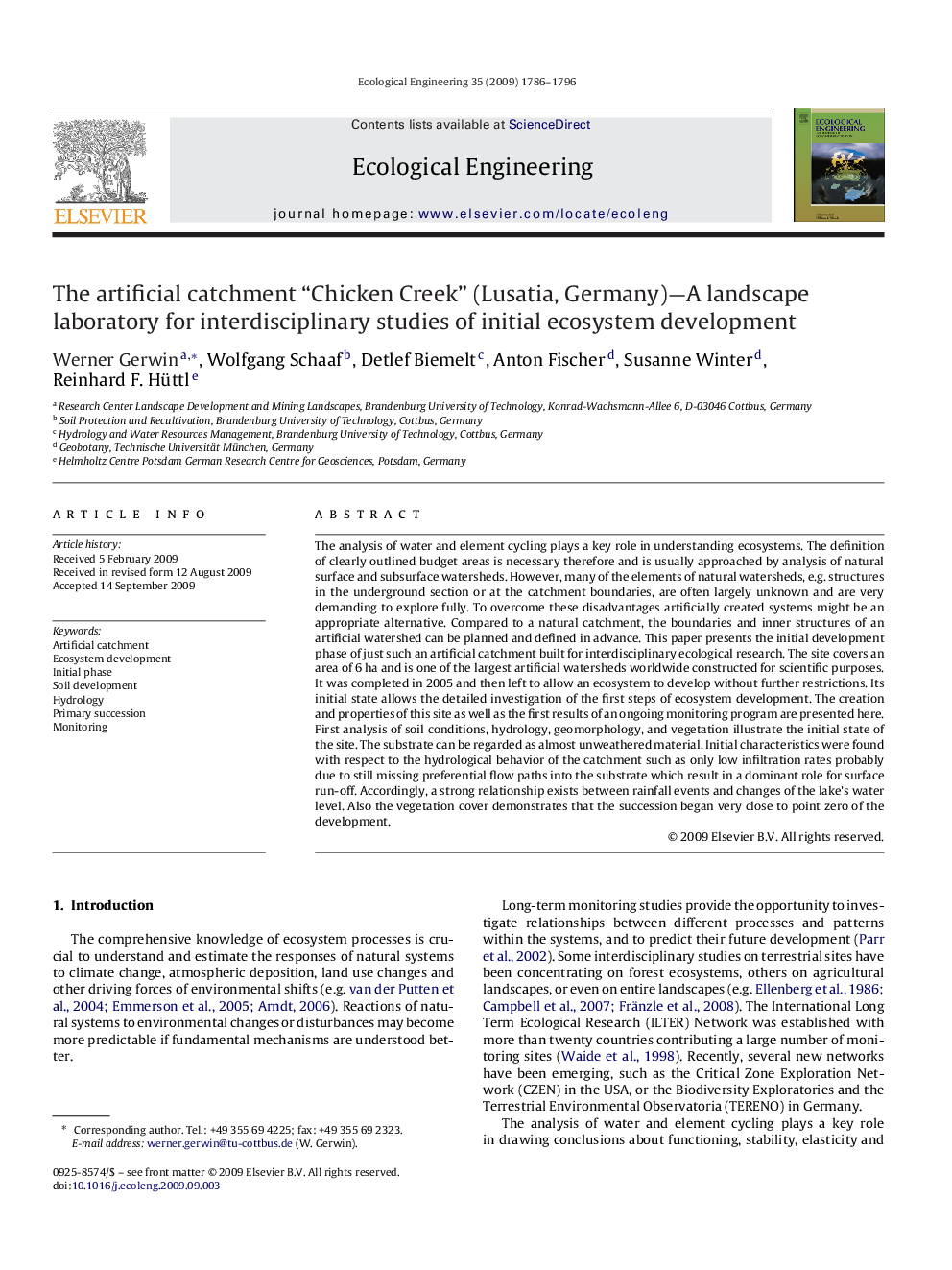| Article ID | Journal | Published Year | Pages | File Type |
|---|---|---|---|---|
| 4390418 | Ecological Engineering | 2009 | 11 Pages |
The analysis of water and element cycling plays a key role in understanding ecosystems. The definition of clearly outlined budget areas is necessary therefore and is usually approached by analysis of natural surface and subsurface watersheds. However, many of the elements of natural watersheds, e.g. structures in the underground section or at the catchment boundaries, are often largely unknown and are very demanding to explore fully. To overcome these disadvantages artificially created systems might be an appropriate alternative. Compared to a natural catchment, the boundaries and inner structures of an artificial watershed can be planned and defined in advance. This paper presents the initial development phase of just such an artificial catchment built for interdisciplinary ecological research. The site covers an area of 6 ha and is one of the largest artificial watersheds worldwide constructed for scientific purposes. It was completed in 2005 and then left to allow an ecosystem to develop without further restrictions. Its initial state allows the detailed investigation of the first steps of ecosystem development. The creation and properties of this site as well as the first results of an ongoing monitoring program are presented here. First analysis of soil conditions, hydrology, geomorphology, and vegetation illustrate the initial state of the site. The substrate can be regarded as almost unweathered material. Initial characteristics were found with respect to the hydrological behavior of the catchment such as only low infiltration rates probably due to still missing preferential flow paths into the substrate which result in a dominant role for surface run-off. Accordingly, a strong relationship exists between rainfall events and changes of the lake's water level. Also the vegetation cover demonstrates that the succession began very close to point zero of the development.
